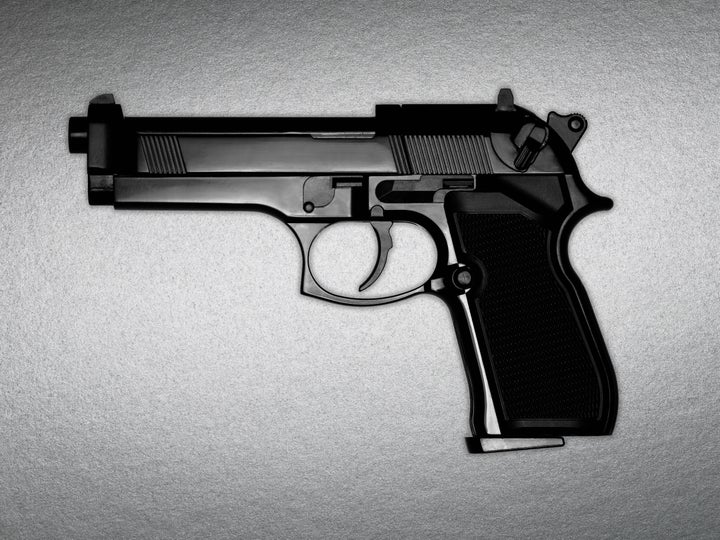
The media has been awash this holiday season with stories about a "dramatic increase" in gun sales in the United States. CNN, for example, declared, "December holiday shoppers were not just interested in buying the hottest electronics and toys--they also were purchasing record numbers of guns." USA Today claimed, "Along with millions of Kindles, Angry Birds and gift cards, Santa left a record number of guns under Americans' Christmas trees." Reuters gushed about "16.5 million queries from firearms sellers" in 2011. Even "The Last Word" host Lawrence O'Donnell talked of a "100%" increase in gun sales over the holiday season.
The source of these stories? Reporters, as always, were being pitched to by the gun lobby--specifically the National Shooting Sports Foundation (NSSF) and the National Rifle Association (NRA). Here's the funny thing, though. The gun lobby doesn't actually provide any gun sales data to the media. The NSSF (the trade association for the gun industry) and the NRA have this data--because gun manufacturers have to understand what their dealers are selling in order to produce the proper amount of product and maximize profits. But the gun lobby has blocked public access to this information for decades. Instead, they offer reporters data on background checks run through the FBI's National Instant Criminal Background Check System (NICS).
The problem is that the FBI has made it patently clear that this is not gun sales data ("These statistics represent the number of background checks initiated through the NICS. They do not represent the number of firearms sold."). Why is that the case? For the following reasons, among others:
- Thousands of background checks each year result in denials when it is determined that individuals in question are prohibited under federal and/or state law from purchasing firearms. So the checks are run, but the guns are never actually sold.
When you screen out certain categories of NICS data that clearly do not represent gun sales (pawn transactions, concealed handgun permit checks, administrative oversight), you come up with a very different set of numbers than what is being reported in the national media. The following is a computation of FBI reporting of background checks representing "Handgun Sales," "Long Gun Sales," "Multiple Sales," and "Other Sales" (which the FBI defines as "frames, receivers and other firearms that are not either handguns or long guns...such as firearms having a pistol grip that expel a shotgun shell, or National Firearms Act firearms"). Note the figures in parentheses on the right. These are rates of (potential) gun sales per capita utilizing annual U.S. population data:
2011: 10,037,110 (3,217 per 100,000)
2010: 8,753,555 (2,835 per 100,000)
2009: 8,927,138 (2,907 per 100,000)
2008: 8,426,245 (2,771 per 100,000)
2007: 7,530,727 (2,499 per 100,000)
2006: 7,361,033 (2,467 per 100,000)
2005: 6,935,952 (2,346 per 100,000)
2004: 6,599,292 (2,253 per 100,000)
2003: 6,333,371 (2,182 per 100,000)
2002: 6,347,492 (2,206 per 100,000)
2001: 7,207,720 (2,528 per 100,000)
2000: 7,067,634 (2,504 per 100,000)
1999: 7,857,932 (2,816 per 100,000)
As you can see, over the past 13 years, the per capita "sales" figure has fluctuated between a high of 3,217 per 100,000 in 2011 and a low of 2,182 per 100,000 in 2003. But there have been no "dramatic" spikes in either direction dating back to the final two years of the Clinton administration.
But let me stress again... Even these revised figures only provide a very crude estimate of gun sales in the United States (for the reasons listed above). At the moment, we do not have enough information to accurately assess the number of guns being sold each year in the United States. By itself, the FBI's background check system cannot provide an accurate sales figure. So while 2011 could very well turn out to be the best year for gun sales dating back to 1998, a great deal more research would have to be done to arrive definitively at that conclusion.
So why do the NSSF and NRA continue to refuse to give reporters access to actual sales data (which they get from every other industry in America)? The answer to that question is obvious. The gun lobby is desperate to perpetuate its image as The Lobby That Cannot Be Crossed by Politicians in the face of a very harsh reality: Declining gun ownership in the United States.
The number of Americans who own firearms has been steadily declining over the past 30 years. According to the General Social Survey (GSS), the most respected source of data on social trends in the U.S., just 20.8% of Americans owned a firearm in 2010. This is down substantially from the 1980 figure of 29%. GSS data also soundly debunks another specious claim that the gun lobby circulates to the media--that gun ownership among women is on the rise. In reality, gun ownership among American women has remained flat over the past three decades, with 10.5% of women reporting owning firearms in 1980 compared to 9.9% in 2010.
With fewer Americans choosing to own firearms, the gun industry understands that it must sell additional firearms to people who are already gun owners. To this end, the NRA has dramatically ratcheted up the promotion of gun confiscation conspiracy theories since the election of Democratic President Barack Obama. What started with the NRA's pledge to spend $15 million to defeat Obama in 2008 and a website called "GunBaNObama" has led to increasingly outlandish and paranoid attacks designed to promote gun sales. As Fox News' Follow the Money segment noted on January 4, "President Obama is the reason" for the upward trend in background checks since 2008, because the NRA has convinced some gun owners that he is "going to go after [their] guns."
The reality, however, is that the guy buying his second assault rifle or third handgun isn't a new gun owner. And sales of used or second-hand guns are not new sales--and no self-respecting industry would treat them as such. By purposely hiding actual data about gun sales in America, the gun lobby is attempting to reinforce its oversize reputation and make the industry look like a more politically potent force than it actually is.
How much longer will the combination of lazy (or sensationalist) reporting, along with the NRA's desire to prop up its gun industry benefactors, lead to widespread misinformation about the state of gun sales in America? We can all appreciate that reporters need stories, and "sexy" material brings ratings, but it's time to correct the record. If Microsoft or Ford tried to send a reputable news outlet information on some tangential metric and pitch it as "sales data"--while simultaneously blocking access to the real figures--they would be laughed at and deemed backwards. It's time to hold the gun industry to the same adult standard.
Or, as the "Industry Insider" columnist in the NRA's own American Rifleman magazine recently put it, "Unlike other industries that can be analyzed, quantified, objectified and measured, the metrics of the gun business are largely unknown. It's amazing how mysterious the industry is when you think about it."
